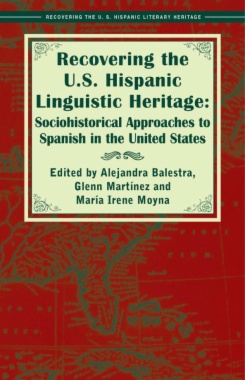

Contrary to popular belief, the first European language spoken on American soil was not English, but Spanish. Explorer Alvar Núñez Cabeza de Vaca and his shipmates landed on the Florida coast in 1513, almost 100 years before the British established a permanent settlement in Virginia.
In this fascinating exploration of the development of the Spanish language from a sociohistorical perspective in the territory that has become the United States, linguists and editors Balestra, Martínez, and Moyna draw attention to the long tradition of multilingualism in the United States in the hope of putting to rest the myth that the U.S. was ever a monolingual nation.
The book is divided into two parts: an extensive introduction and a collection of seven articles about various aspects of the sociohistorical development of Spanish. The in-depth introduction gives the reader a historical overview of the areas of the U.S. previously occupied by Spain and Mexico, from the arrival of the earliest settlers to the Mexican-American war and the Treaty of Guadalupe Hidalgo. The introduction also reviews language policies during the colonial and Mexican periods as well as current linguistic approaches, census data, and sociolinguistic research. In addition to shedding light on the linguistic evolution of Spanish in the U.S., the seven papers included in the second section of this volume offer the reader a fascinating glimpse into historical ideologies and beliefs in the territory that has become the United States.
A truly multidisciplinary book that touches on a number of related fields, Recovering the U.S. Hispanic Linguistic Heritage will be a must-read for scholars of history, sociology, and linguistics and anyone interested in the evolution of the Spanish influence and language in the U.S.